RICHARDSON BUILT BY SWEAT AND TEARS - Cemetery Recalls Tragic Deaths, Rats Kill Infant Child
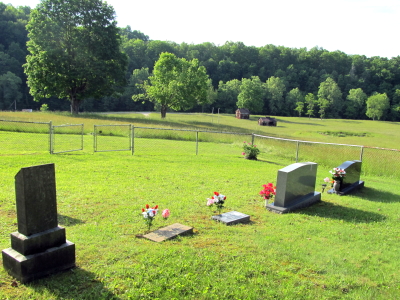
Two families now lives in the former bustling Village
of Richardson, remembered here from the Meadows Cemetery
By Bob Weaver
We spend many days visiting our favorite long-gone Village of Richardson, recalling the families and their labor that built the hamlet starting in 1866.
While we have written many stories about the place, once a busy center for milling, commerce and farming, it represents a time in Calhoun history when virtually all that was accomplished was by hard labor and sweat, a village carved in the wilderness.
There are many old photos and stories of the place on the Hur Herald.
The first I heard of the place was from my grandmother, Virginia Riggs McCoy of Hur, who said after she married in 1895, rode a horse to the commercial center, a distance of six miles to consult a physician.
Having returned to Calhoun 28 years ago, few weeks go by that I don't go there, sometimes by taking the remote Husk Ridge from the Village of Hur.
Charles Richardson, who came to the spot from Massachusetts shortly was the shaker and mover that inspired the local settlers, and befriended the likes of Civil War rebel Daniel Duskey, whose descendants maintained a store in the village for many years.
Duskey was not a well-received man after the war was over, even census takers declined to go to his abode and list his presence, likely because of his connection to the blood-letting Moccasin Rangers.
Richardson brought with him $7,000 in cash, which he used to clear 400 acres along the river, built some houses and stores, and brought Hereford cattle to area.
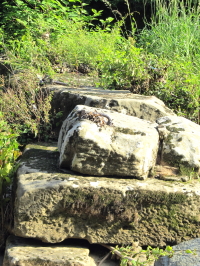
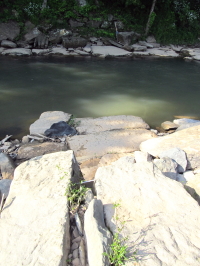
A few huge cut stones remain from the Richardson Dam and Mill
The village had all the components, stores, livery, blacksmith, physician's office, drug store, barber shop and hotels to a dam and mill built on the West Fork of the Little Kanawha that ground grist and milled lumber.
Elva Duskey said in later years, Little Kanawha River gasoline driven riverboats came up the West Fork of the LK to Richardson and Hassig, including one with paddles with steel spikes to get over the sandbars.
Its been a fascination that German immigrants came to Richardson to establish their roots, most working in the areas first natural gas boom about 1900.
In the 1940s and 1950s it was exciting for me to go there a watch the giant natural gas compressor station chugging, with company houses on the hillside.
Spending an hour or so at the Bee and Meadows Cemetery overlooking the grassy fields where the village once stood, I imaged those families going about their daily routine, loggers floating logs down the West Fork, customers coming to the stores, horsemen riding into town on the muddy primitive road, and children playing ball in the grassy fields.
Buried in the cemetery are some of the villages earlier settlers, Kemmner, Meadows, Bee and the wife of well-known physician Dr. Commodore Connolly.
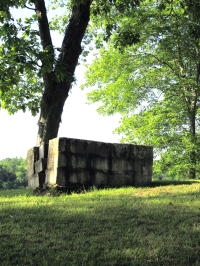
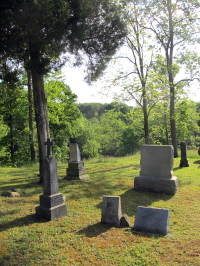
A tomb built for infant in 1880 (left) in the Bee Cemetery
Also resting there are reminders of a hard life with an early mortality rate, a primitive tomb erected by W. J. and J. E. Hobart in 1880 for their year-old daughter Isa Dora. Hobart was employed as a storekeeper, like most coming to the village up the Little Kanawha River to seek his fortune.
Nearby is a marker and grave for Bernard Freemont Hardman, age four, who burned to death in the village in 1906 and likely the grave of a small child killed by rats in 1897.
A Calhoun Chronicle account says, "The mother went to bed taking with her her twin babies, aged about two weeks. Being in rather delicate health and having lost considerable sleep she slept very soundly."
"On awaking she found one of the babies dead, having been killed by rats during the night. The rats had eaten the nose and one cheek off and one eye out, besides otherwise horribly mutilating the child."
So much for the fanciful belief those were "the good old days."
Today, two families lives in the long-gone village.
See RICHARDSON: 'TRUE BLUE' GENTLEMAN ESTABLISHES VILLAGE IN 1866